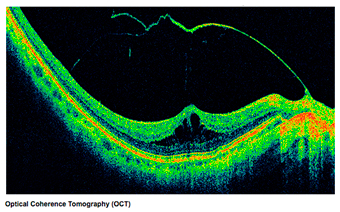Ocular inflammation and retinal detachment
1. Ocular inflammation
We study the factors involved in uveitis and in the processes leading to the breakdown of the retinal pigment epithelium barrier, as well as the involvement of somatostatin in these events. In addition, we have studied how the inflammatory factors found in PRGF influence inflammation, particularly as they are being used as an intraocular therapy for the treatment of the macular hole.
Representative publications:
- Heller, J.P. et al., 2015. A Method for the Isolation and Culture of Adult Rat Retinal Pigment Epithelial (RPE) Cells to Study Retinal Diseases. Front Cell Neurosci. 9:449.
- Fonollosa A. et al., 2019. Effect of somatostatin on human retinal pigment epithelial cells permeability. Exp Eye Res. 184:15-23.
- Pereiro X, et al., 2018. Dexamethasone protects retinal ganglion cells but not Muller glía against hiperglycemia in vitro. PLoS One 26:13(11):e0207913. doi: 10.1371/journal.pone.0207913
2. Epiretinal membranes
One of the effects of retinal detachment is the formation of epiretinal membranes that produce traction on the retina and that are very likely to cause detachment. The nature of these membranes, located between the vitreous humor and the retina, is unknown. In this project we analyze these membranes from a lipidomic and proteomic point of view.
Project:
- Ultrastructural and Molecular Study of Epiretinal Membranes. PIBA 2020-1-0026.

